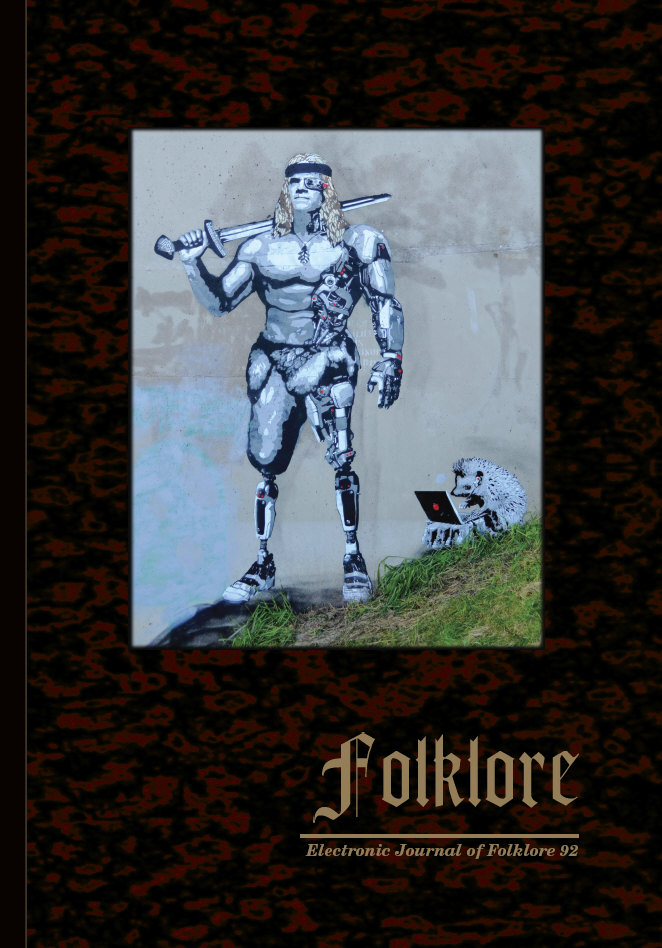The Appearance of Grotesque Forms in Crystal Manor Tales
The Appearance of Grotesque Forms in Crystal Manor Tales
Author(s): Esra SazyekSubject(s): Customs / Folklore, Cultural Anthropology / Ethnology, Culture and social structure
Published by: Eesti Kirjandusmuuseum
Keywords: Bakhtin; Crystal Manor Tales; folklore; grotesque; metamorphosis; Turkish folklore;
Summary/Abstract: The term “grotesque”, derived from the Italian word “grotto” for underground caves, refers to the ornamental art in which human, animal, and plant motifs are intertwined on the walls of Nero’s Golden House (Domus Aurea), discovered during the Roman excavations in 1480. However, over time, it has abandoned its decorative meaning and become a form of expression in art and literature, which is sometimes associated with the humorous and sometimes with the tragic. Adjectives such as “absurd”, “outrageous”, “strange”, and “incompatible” characterize the grotesque, which is intended to surprise, frighten, and disgust an audience as well as make them laugh. More importantly, the grotesque exists across the folk mythology and pre-classical works of many cultures as a significant means of expression that takes and presents the ugly and formless from within an exciting life. The present study examines Crystal Manor Tales through the lens of the grotesque theory, which Russian literary theorist Mikhail Bakhtin conceptualized in his work Rabelais and His World (2005 [1965])1 by associating it with medieval and Renaissance carnivals. Therefore, it has been determined that the tales aim to expose society’s flaws through the grotesque images they convey, as well as to establish a healthier order by excluding un-desirable behaviors.
Journal: Folklore: Electronic Journal of Folklore
- Issue Year: 2024
- Issue No: 92
- Page Range: 145-166
- Page Count: 22
- Language: English

